Arthropathy is a degenerative (or metabolic) disease, i.e. non-inflammatory.However, official medicine has not conducted a comprehensive study on the causes of joint joints.The proposed version shows that excessive weight in tissues (muscles) and joints, age, metabolic diseases, premature wear of cartilage, small loads, large loads, etc., genetics, etc., depend on arthritis.That is, in order to effectively treat and prevent knee joint arthritis, it is not clear what is affected.
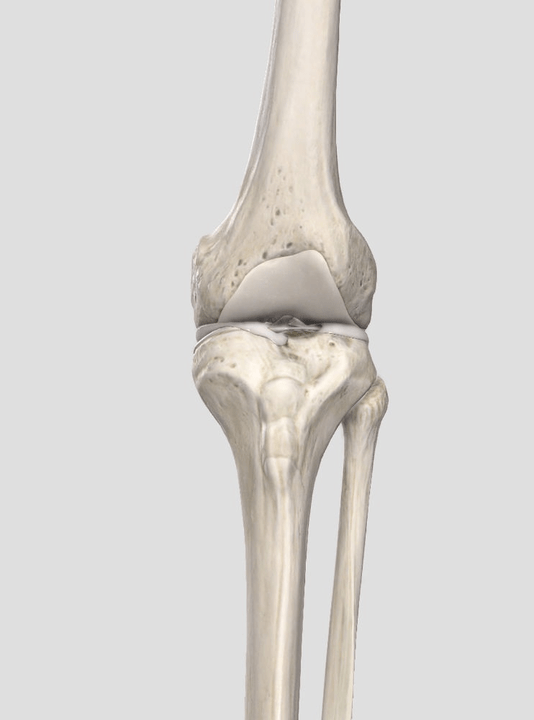
In fact, (this is confirmed by evidence-based medical literature and experience), arthritis is the result of muscles of the disease of interest (muscles transmitted through specific joints).Sick muscles in a constant compression state exert excessive pressure on the joints, thereby increasing their wear and tear.
Knee arthritis - What is it?
The articity of the knee (as with any other joint) is differently called deformed osteoarticity (i.e., the degeneration of cartilage and bone) is the progressive degeneration of cartilage and bone (close to cartilage) tissue - bone disease, its erasing and decreasing nature (the motivation that leads to joints), which is limited, this is limited, this is limited, this is limited, this is limited, this is limited, this is limited.varying degrees of intensity.
In short, this is the wear of the joints, which means that the wear of the cartilage fabric should ensure smooth sliding relative to each other's joint surfaces, as well as the bone structure where the cartilage resides.The entire process is accompanied by narrowing the intermediate space and loss of ligament elasticity.
Arthritis in the knee joint: Symptoms
This disease is often asymptomatic and can only be detected on MRI.During the “maturity” phase of the disease, it can make yourself feel yourself by increasing pain in the problem area and joint movement restrictions.At the same time, joints are a common problem, occurring in 70% of all arthritis.It is impossible to call it the cause of disease development, but certain factors often become catalysts for arthritis.
The main symptoms of knee joints include:
- Knee pain of varying intensity and duration
- The stiffness of the knee joint is that it is impossible to fully straighten or bend the legs in the knee joint (sometimes it is impossible to squat down)
- Click and lie up on your back in the knee joint.It is believed that the joints lose fluid and the joint surfaces slide relative to each other, which may be accompanied by characteristic sounds
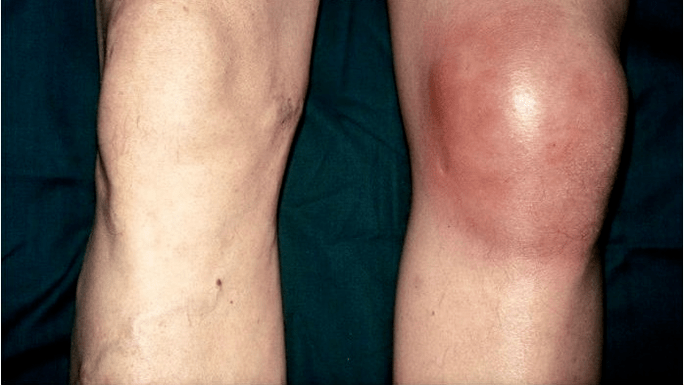
Arthritis in the knee joint: Cause
However, experts in stenosis believe that the main cause of joint joints is myofascial syndrome, which manifests as muscle disease (trigger point) through the joint of interest.
The trigger point is the focal point of the voltage in the muscle fibers, which is activated under certain conditions and manifested by acute pain.It is the trigger point that confirms myofascial syndrome.If there is a trigger point, the elasticity of the muscles will be lost, and therefore the mobility of the joints will be reduced.They are caused by injuries and dense or chronic muscle overload, and stay in a fixed state for a long time.
The muscles are in a contracted state (constant compression), and this excessive compression is on the joint of interest (in our case the knee joint).
What is the difference between knee joint and arthritis?
To understand the causes and nature of the disease process, it is important to determine the differences between arthritis and arthritis.Their main difference is that the nature of the joint is not inflammatory, while arthritis is an inflammatory pathology.At the same time, the inflammatory process is systemic in nature and spreads to the entire organism.
Arthropathy is a metabolic pathology caused by metabolic diseases in the body.Pain syndrome in arthritis occurs under comprehensive conditions - trigger points and various joint diseases.Eliminating the trigger point will result in a significant improvement under general conditions if recovery is not completed.
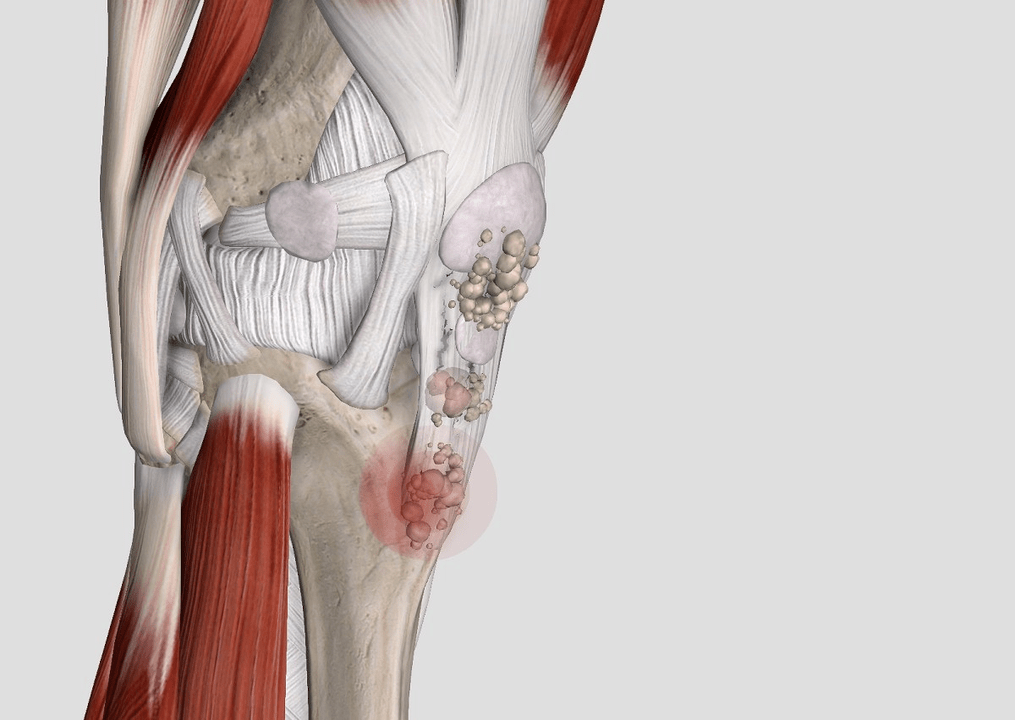
The main criteria for knee arthritis is the presence of inflammatory agents - i.e. viruses, infections, fungi, bacteria.In addition, it can be located anywhere in the infectious agent.Gonorrhea or other infections usually turn into a chronic form and cause joint complications.
Knee arthritis, redness in the skin around the joints, swelling and volume increase in joints, and temperature increases throughout the body and local joints are observed.With the joints of the knee joint, these symptoms are usually not.However, arthritis and arthritis can be combined.
4 stages of knee joints
If, if arthritis is detected, full treatment is not started, over time, the disease will begin to develop and the symptoms will increase.Timely diagnosis and appropriate treatment (effectively combined with other treatments) will significantly improve the patient's general condition and prevent prolonged, painful and expensive treatments.
Formally distinguish between the 3 (4) stages of knee joint articulation:
- 1 degree.This is a time period from the first symptoms of arthritis to its visible manifestations that can already be detected on the first examination or X-ray.The patient's condition is characterized by different intensities of painful sensations during exercise.
- 2 degrees.Patients can feel discomfort and “shooting” pain even under slight load.When walking, squatting, etc., human movement can be accompanied by knee tightening.It is possible to reduce the knee mobility.Areas affected by joint effects appear to be deformed visually and increase in size.
- 3 degrees.There is almost no cartilage tissue in the joint.Using particularly advanced forms, the limbs may be completely fixed.It is difficult for the patient to accept that he will feel comfortable, and it is almost impossible without auxiliary means.
- Similarly, the fourth stage of the knee joint can be distinguished separately.This situation is completely destroyed, which leads to the fact that the joint completely loses its function.At the same time, the patient experienced "joint blockade" - acute pain syndrome.

Diagnosis of knee joints
Arthropathy is a chronic disease, and the treatment of diseases is comprehensive and regular.Therefore, timely diagnosis and appropriate treatment will enable the patient to minimize damage to the knee joints.
The diagnosis of arthritis has also become complicated due to the fact that this disease is often asymptomatic.However, in cases of painful sensations, the doctor after the examination may prescribe a radiograph.Although its results are not always indicative, they have a great idea of how “progress” the disease is.
Thanks to modern diagnostic methods - ultrasound, MRI, etc., more accurate data can be obtained.
However, changes in MRI are not always found to correspond to patients’ feelings and complaints.It happens that in the knee joint, the cartilage itself, as well as the meniscus and ligaments, has changes in degenerative diseases, but there is no complaint at all.And vice versa, there are pain and other symptoms, and on the checklist, everything is fine.
Recall that for the joints of the knee joint, it is important to diagnose the hip muscles at the myofascial trigger point (the muscles of the lower leg, the quadriceps of the thigh), which in 80% of the cases can cause pain and cause changes in the joint picture.
Important: If the patient has psoriasis, arthritis may be the origin of psoriasis.
Ineffective treatment of knee joints
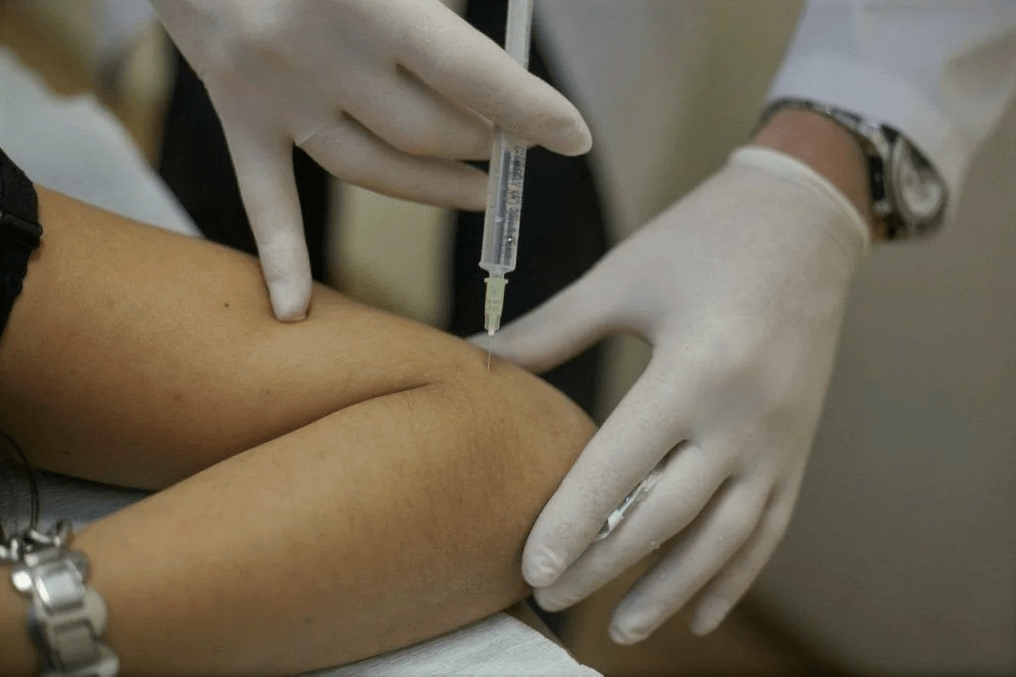
All official joint treatment methods are divided into:
- nonpharmacological;
- Pharmacology;
- surgical.
Surgical intervention is a measure required in the late stages of the disease.Perform to replace damaged joints with synthetic analogues.
Usually, doctors prescribe various physical therapists and exercise therapies (physical therapy sports) to treat knee joint arthropathy.However, strength exercise will only aggravate the progression of the disease, activate the trigger point, increase pain, etc.Therefore, this treatment is ineffective.
Khondroprotectors deserve special attention.It is believed that this category of drugs restored cartilage.First, the evidence base for these drugs is questionable in nature, as research on these expensive drugs was conducted by the manufacturer itself.Second, this is symptom treatment, i.e., it targets investigations, not causes.The reason is muscle disease.
Joint joints are a degenerative disease, namely inflammation.However, official medicine has not conducted a comprehensive study on the causes of joint joints.
The proposed version shows that excessive weight in tissues (muscles) and joints, age, metabolic diseases, premature wear of cartilage, small loads, large loads, etc., genetics, etc., depend on arthritis.That is, in order to effectively treat and prevent knee joint arthritis, it is not clear what is affected.
In fact, (this is confirmed by evidence-based medical literature and experience), arthrosis is the result of a disease of interest (through muscles of a particular joint).Sick muscles in a constant compression state exert excessive pressure on the joints, thereby increasing their wear and tear.
Effective treatment of knee joints
The appropriate treatment of knee joint articular joints should be systematic and complex.It is precisely based on muscle treatment, including taking medications (used to regulate aggravate and harmful factors of MFS), as well as appropriately selected physical therapy for knee and hip muscles), and of course myofascial massage.
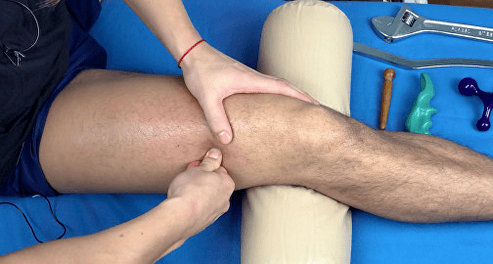
The most effective way to treat TT is:
- In-depth caress massage;
- Strip trigger point
- Shockwave therapy
- Relax in the picture behind.
In addition to the anterior thigh muscles, the synergistic and antagonist muscles are also massaged.Meanwhile, the bone itself has no massage - the massage experts will focus mainly on the muscles.
The main massage "equipment" is the owner's hand.For arrogance, using various devices helps to improve the effectiveness of the program.
Therapy for exercising knee joints
The final stage of treatment is the exercise of stretching the upper (front) surface of the thigh.It is important that you feel nervous in the massage place.
When prescribing and performing articular physical therapy exercises in knee joints, it is important to understand the basic principles – that is, why these exercises are performed (for what purpose).The main goal is to stretch all abbreviated muscle fibers (cucklings) so that the muscle can fully extend its anatomical movement volume.
Prevent joints and joints
In the treatment of the disease, it is important to observe preventive measures including the following actions:
- Compilation of the Right Diet: Your daily menu should be balanced and rich in trace elements, proteins and vitamins.After all, lack of calcium, such as calcium, magnesium, and zinc can lead to the intensification of myofascial syndrome.
- Moderate physical exercise: Try not to unnecessarily load the knee joint and avoid traumatic damage.If the muscle is in a static position for a long time - this helps the formation of the trigger;
- Reject bad habits: live a healthy lifestyle and follow your weight;
- Complex Therapy: Combining popular treatments with auxiliary methods.
Auxiliary methods for treating knee joints
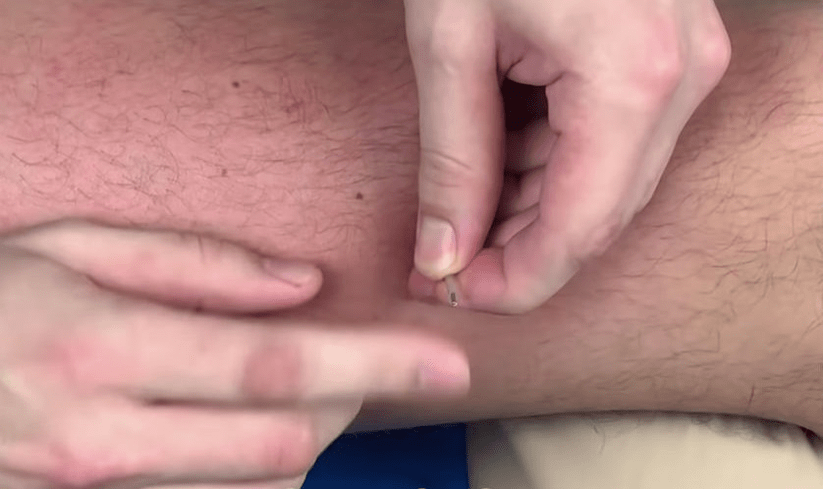
If the treatment of the knee joint is combined with the adjuvant treatment method, the treatment of the knee joint will be particularly effective.Consider the most popular ones.
- Laser therapy.This process is considered the most popular and common among patients suffering from knee joints.The therapeutic effect is achieved due to the reflex expansion of blood vessels above the focus of the pathological process in the muscle.This helps normalize metabolism (don't forget, arthritis is a metabolic disease) and helps reduce pain syndrome.
- Cryotherapy.This method is not as popular as the previous one.However, its effectiveness is very high.Due to local exposure to low temperatures, pain in the problem areas is significantly reduced and the formation of biologically active substances slows down, leading to the intensification of the disease.Cryotherapy procedures help in activation of blood flow and recovery processes in the joints.
- Balneotherapy.It is performed under nursing home conditions.Arthritis Aquarius means using a medical bath – using this condition, a ra bath is considered the most effective.The therapeutic effect of the procedure is the improvement of metabolic processes in the joints.
Complex therapy combined with self-quality can improve general conditions through arthritis and minimize the possible risk of complete joint damage.The main thing is to follow the expert’s advice, follow preventive measures, and combine the main therapies with other treatments.























